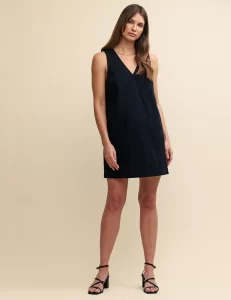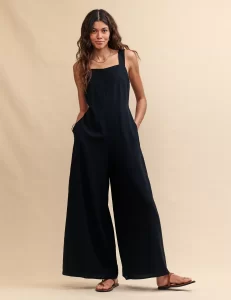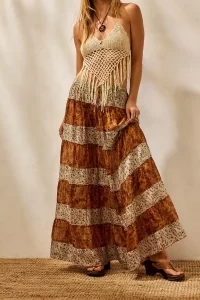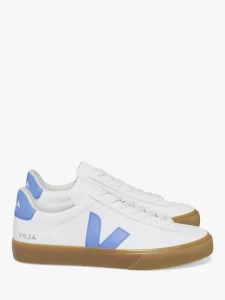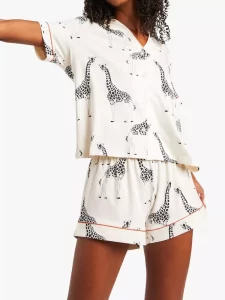
As a busy woman, finding the time and resources to delve into the world of conscious clothing may seem like a daunting task. Amongst a plethora of brands claiming sustainability, differentiating between the truly eco-friendly and the imposters can be difficult. But fear not, as I am here to guide you through the sustainable fashion landscape, helping you make more informed choices about your wardrobe. Let’s get started!
What Exactly Is Conscious Fashion?

So, is the world of conscious fashion just another trend to keep us on our toes, or is there substance to it? Conscious fashion, isn’t just about making a statement with your outfit; it’s about making a statement with your values. It’s the sartorial equivalent of choosing a salad over a steak for the good of your health and the planet – except we’re talking about style here.
At its core, conscious fashion is about mindfulness and ethics. It’s about pausing before you purchase to think, “Where has this garment been? What stories does it tell?” It’s our opportunity to be part of the solution, rather than contributing to the problem. Sustainable fashion brands are not just concerned with the aesthetics of a garment; they consider its entire life cycle – from the seed being planted for organic cotton, through the hands that weave and stitch, right down to what happens when it’s no longer in vogue.
According to WRAP, a UK-based organisation dedicated to reducing waste, Britain discards around 350,000 tonnes of clothing to landfill each year. This stark figure showcases the magnitude of textile waste in the UK and is a glaring reminder of why conscious fashion is necessary.
We’re talking materials that limit negative impacts on the planet, like organic cotton, hemp, and the revolutionary recycled polyester. But it’s not only about the fabric. It’s also about championing fair wages, ensuring safe working conditions, and crafting garments that are designed to last longer than a season.
So, when you choose conscious fashion, you’re essentially putting on your detective hat, looking beyond the label, and aligning your wardrobe with the world you wish to see. It’s about style with substance, friends. And who said doing good couldn’t look fabulous?
The True Cost: Impact on People and the Planet

Venturing into the realm of conscious fashion reveals a truth more bitter than forgetting your morning coffee. The fashion industry, is like a glitzy party on the surface, but beneath it lies a reality that’s far from glamorous. It’s a significant polluter, up there with the likes of oil and transport, and the tales of exploited garment workers, both abroad and at home, are heart-wrenchingly common. Each piece hanging in our wardrobes comes with a hidden cost, a cost not reflected in the price tag, but one that people and the planet pay dearly for.
Let’s pull back the curtain a bit, shall we? The journey of a single garment from concept to hanger can be a murky one, involving gallons of water (enough to quench your thirst for several lifetimes), hazardous chemicals that make their way into our waterways, and a carbon footprint that could rival that of a small country. And while the fabric dances delicately on our skin, the hands that stitched it together may have never known a fair wage or safe working conditions.
But here’s where we strut in with purpose – by choosing sustainable fashion, we’re voting for a change. We’re not just buying clothes; we’re investing in a better world. Supporting ethical brands (and brands that take ethical steps) means pushing for a future where fashion doesn’t cost the earth or exploit its inhabitants. It’s about sashaying down the high street with a clear conscience, knowing that the garments adorning your body tell a story you’re proud to share. So, let’s make every purchase a step towards a more sustainable and just planet. After all, if fashion is a statement, let’s ensure it’s one worth making.
Decoding Labels: What to Look for in Women’s Fashion

Embarking on a sustainable fashion journey can sometimes feel like decoding the Rosetta Stone – challenging but oh-so rewarding when you finally crack it. Eco-labels can be a befuddlement, even for me as a corporate sustainability analyst. But fear not, for I’ve navigated these murky waters, and I’m here to share my compass with you.
First off, for a quick check, certifications are your new best friends. Spotting a GOTS (Global Organic Textile Standard) label is akin to finding a green beacon of hope; it assures you that the garment meets a higher standard of ecological and social criteria. For example, M&S currently recognises two organic cotton certifications, GOTS and the Organic Cotton Standard (OCS). Similarly, brands like Boody (my favourite underwear brand), that are B Corp certified have to show that they meet high standards of social and environmental practice. Fair Trade is another great one to look out for, which ensures the workers behind our clothing are paid fairly and work in safe conditions.
Materials matter immensely, too. Organic cotton whispers promises of pesticide-free fields, while hemp boasts durability and minimal water usage. And let’s not forget about recycled polyester – a hero in its own right, turning PET bottles from potential landfill occupants into your new favourite blouse.
The above in mind, it’s crucial to remember that certifications, whilst a great start, don’t account for all negative practices. Further still, whilst recycled polyester has its advantages, it isn’t a flawless solution. Over time, washing these garments can release microplastics into our waterways, and ultimately, they can still end up in landfill once they’ve reached the end of their lifecycle. So, whilst these certifications and attributes are undeniably important, it’s also beneficial to invest in good-quality, long-lasting pieces and practise proper care to extend their longevity and limit long-term environmental impacts.
Looking ahead, it’s imperative for fashion labels to embrace transparency, particularly around social impacts. They need to go beyond showcasing eco-friendliness, to illuminate the human stories and ethical practices behind our apparel. Clear indicators of fair labour, community benefits, and social footprint are essential. We can push for this transparency, through our purchasing decisions.
High Street Heroes: Shopping Sustainably Without Sacrificing Style

By now you’re probably thinking, ‘I thought she was going to make things clearer’… So, what’s the secret? Put simply, it’s identifying those high street havens that are dipping their toes into the green pool.
Many mainstream retailers are now flirting with sustainability. A few years ago this was typified by the launch of ‘conscious collections’ that boasted eco-friendly materials and ethical manufacturing processes. These ranges, have come under increasing scrutiny, rightly so, from a greenwashing perspective, as we will discuss below.
The result has perhaps made identifying sustainable pieces a little harder.
But here’s a cheeky tip – we don’t need banners, a little sleuthing goes a long way. Peek at the tags and hunt down those key eco credentials: organic cotton, recycled polyester, Tencel and the like.
And let’s not forget the allure of versatility. Opting for classic, timeless pieces that can shapeshift through your wardrobe, seamlessly transitioning from office chic to happy hour glam, means you’re not just investing in sustainable fashion; you’re curating a smart, stylish, and eco-savvy collection that works harder and lasts longer.
So, my fellow fashion-forward eco warriors, let’s embrace the challenge and transform the high street into a runway of sustainable style. After all, who says you can’t save the planet one stunning outfit at a time?
A Circle but it isn’t Vicious

Diving into the world of circular fashion is akin to discovering a hidden passage in your wardrobe that leads to a realm of endless style opportunities, without costing the earth – literally and metaphorically. This sustainable sanctuary operates on the principle of giving garments a second (or third, or fourth) lease on life, ensuring that nothing goes to waste. My adventure into circular fashion began with the purchase of some real leather trousers off Ebay, I paid about £16. That was7 years and 2 babies ago and they are still going strong.
At the time, i didn’t think about embracing circular fashion, vintage and pre-loved treasures but now it’s second nature. Each piece tells a story, adding a rich layer of history and uniqueness to my wardrobe that fast fashion could never. And let’s not forget the thrill of the hunt – finding that perfect, pre-loved designer dress at a fraction of its original price is an unmatched fashion high. So, my fellow style seekers, by incorporating circular fashion practices into our wardrobes, we’re not just making a statement of style; we’re participating in a sustainable cycle that celebrates longevity, creativity, and mindful consumption. Who knew going round in circles could be so rewarding?
Retailers to have a look at: Ebay, Vestiere Collective, Depop to name just a few.
The Price Tag Predicament: Balancing Budget and Ethics

Ah, the age-old dilemma: how to marry the principles of conscious consumerism with the realities of a budget that’s more ‘prudent’ than ‘princely’. It’s a conundrum I’ve tangoed with more times than I care to admit. But who says ethical elegance needs to empty your purse? Certainly not this savvy shopper.
Embarking on a sustainable fashion journey shouldn’t mean taking out a second mortgage. I’ve learnt to navigate this with a blend of strategy and creativity. It’s about being a shrewd investor in your wardrobe, prioritising quality over quantity, and items that promise longevity both in style and durability. Think of it as assembling an art collection; you start piece by piece, choosing each for its ability to stand the test of time and trends.
Here’s my pearl of wisdom: the ‘cost per wear’ formula. Simply put, it’s the total cost of an item divided by the number of times you’ll wear it. This little calculation has revolutionised how I assess the true value of clothing. A £100 dress worn a hundred times is more wallet-friendly in the long run than a £20 bargain that barely survives two outings.
Additionally, as noted above, as high street brands become more transparent about the sustainability credentials of their wares, conscious c;othing is becoming increasingly accessible.
Cutting Through the Greenwash: Identifying Genuine Sustainable Brands

Distinguishing the truly green from the merely greenwashed requires a blend of Sherlock Holmes’s detective skills and a dash of scepticism. I’ve danced this dance, and let me tell you, the key to unlocking genuine sustainability lies in transparency and authenticity. Brands that walk the walk are usually proud to talk the talk – and they do so openly. They’re like an open book, with pages filled with details about their supply chains, ethical labour practices, and material sources.
But here’s where the plot thickens: some brands are masters of disguise, weaving tales of sustainability with little substance behind them. To cut through the façade, I’ve adopted a few tactics. I dig deep into their sustainability reports, looking for concrete evidence rather than fluffy adjectives. I favour brands that don’t just claim to be eco-friendly but have the certifications to prove it, like B Corp or Fair Wear Foundation badges shining like medals of honour.
And in this quest for truth, remember, it’s not just about what they’re saying – it’s about what they’re not saying. A genuine brand doesn’t shy away from discussing its challenges and future goals. So, arm yourself with curiosity, and let’s peel away the layers of greenwash to reveal the true champions of sustainable fashion.

And there we have it, a whistle-stop tour through the verdant valleys of conscious fashion. I hope I’ve illuminated not just the path to a greener wardrobe. Remember, the pursuit of sustainable fashion is a journey, not a sprint. It’s about making better choices, one garment at a time, and appreciating the stories behind our clothes. As we’ve explored, it doesn’t require an overhaul of your entire wardrobe overnight or breaking the bank. Instead, it’s about mindful decisions, seeking out those pieces that resonate with your values as much as they do with your personal style. Embrace the challenge, relish the hunt for those sustainable gems, and walk confidently in the knowledge that every conscious choice you make is a step towards a more ethical, sustainable fashion future.
Thanks for joining me on this style journey! If you enjoyed this post, remember to like, subscribe, and follow me on Instagram at @lifeTREstyle. Stay stylish and see you next time!
Please note that some of the links in this post may be affiliate links. This means that if you make a purchase through those links, I may earn a small commission at no extra cost to you. Your support helps me maintain this blog and continue providing valuable content. Thank you for your understanding and for being part of this community!
